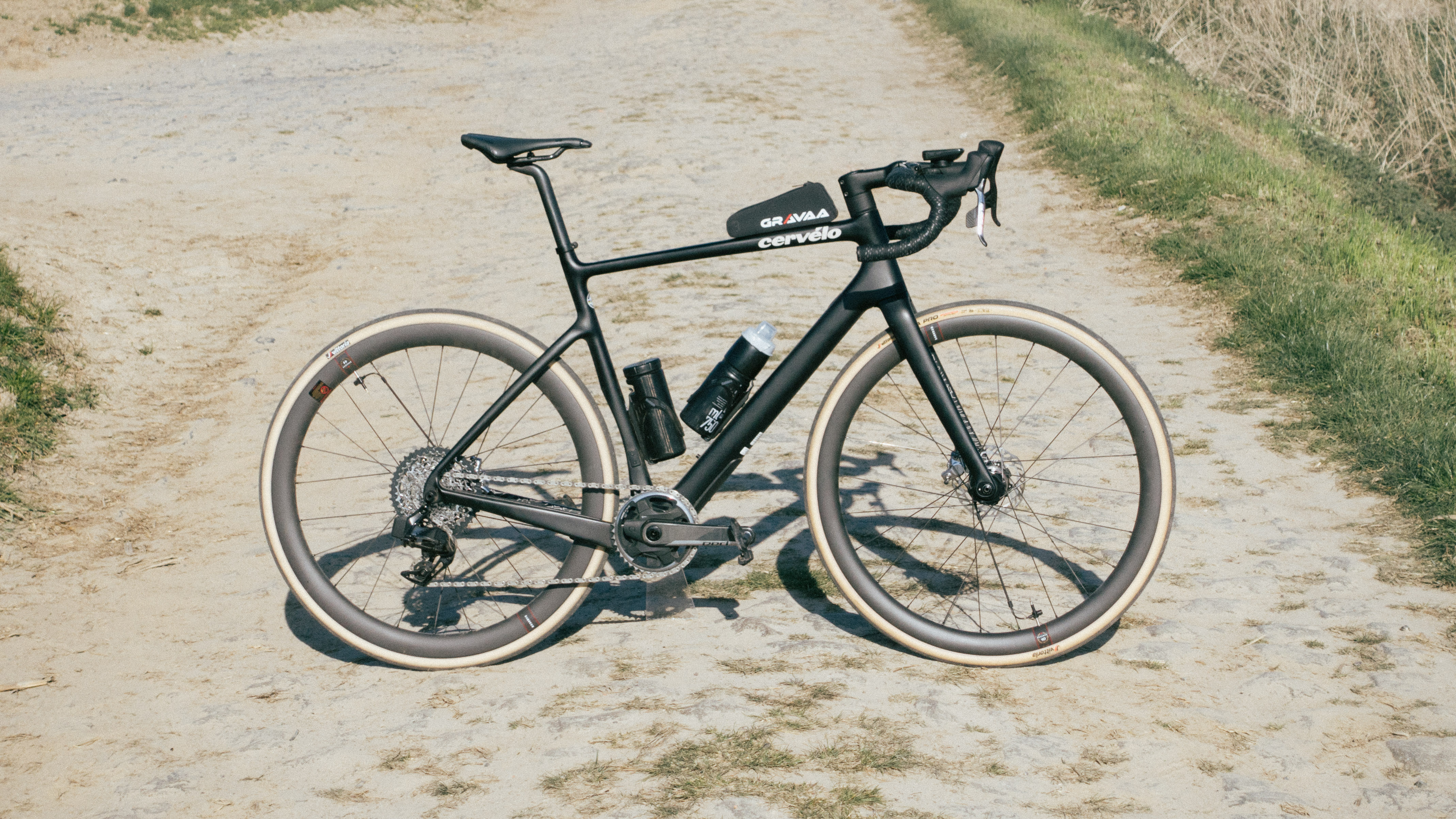
If you’re reading this as it is published it’s the morning of the women’s Paris-Roubaix, and about 24hrs until the men’s. The Queen of the Classics is about as close to a mecca-like experience as cycling tech journos get, and in a world of ever-increasing homogenised bike setups, it’s the one place where, if you know where to look, you can find some weird and wonderful mods.
The Gravaa self-inflating tyre system isn’t a secret by any means. It’s been ridden to victory in the UCI gravel world championships by Marianne Vos, to second place at the Tour of Flanders by Pauline Ferand-Prévot, and to victory in the GP Denain by Matthew Brennan. (a cobbled race that shares many characteristics with Paris Roubaix)
While Vos and Ferrand-Prévot rode the system at Flanders, the men decided against it, Grischa Niermann, head of racing at Team Visma said in the press conference that the Flandrian roads simply weren’t rough enough to use it. It seems certain (though as ever I may be proved wrong in only a handful of hours) that the Visma women will use it, and having spotted Wout van Aert using it in his final recon too it’s likely that the men, in some capacity at least, will too.
The system has remained pretty secret, at least in terms of technical details, but on the Thursday before Paris-Roubaix, on the drive to our basecamp for the weekend, I got the chance to throw a leg over a Gravaa-equipped Cervélo Áspero for a few laps of the four-star Champin-en-Pévèle sector. It’s certainly a very interesting bit of tech, and clearly, given the brand is an official partner of the team now, something Visma are convinced of the benefits of, but what is it like to use, and do I actually think it offers an advantage on the cobbles?
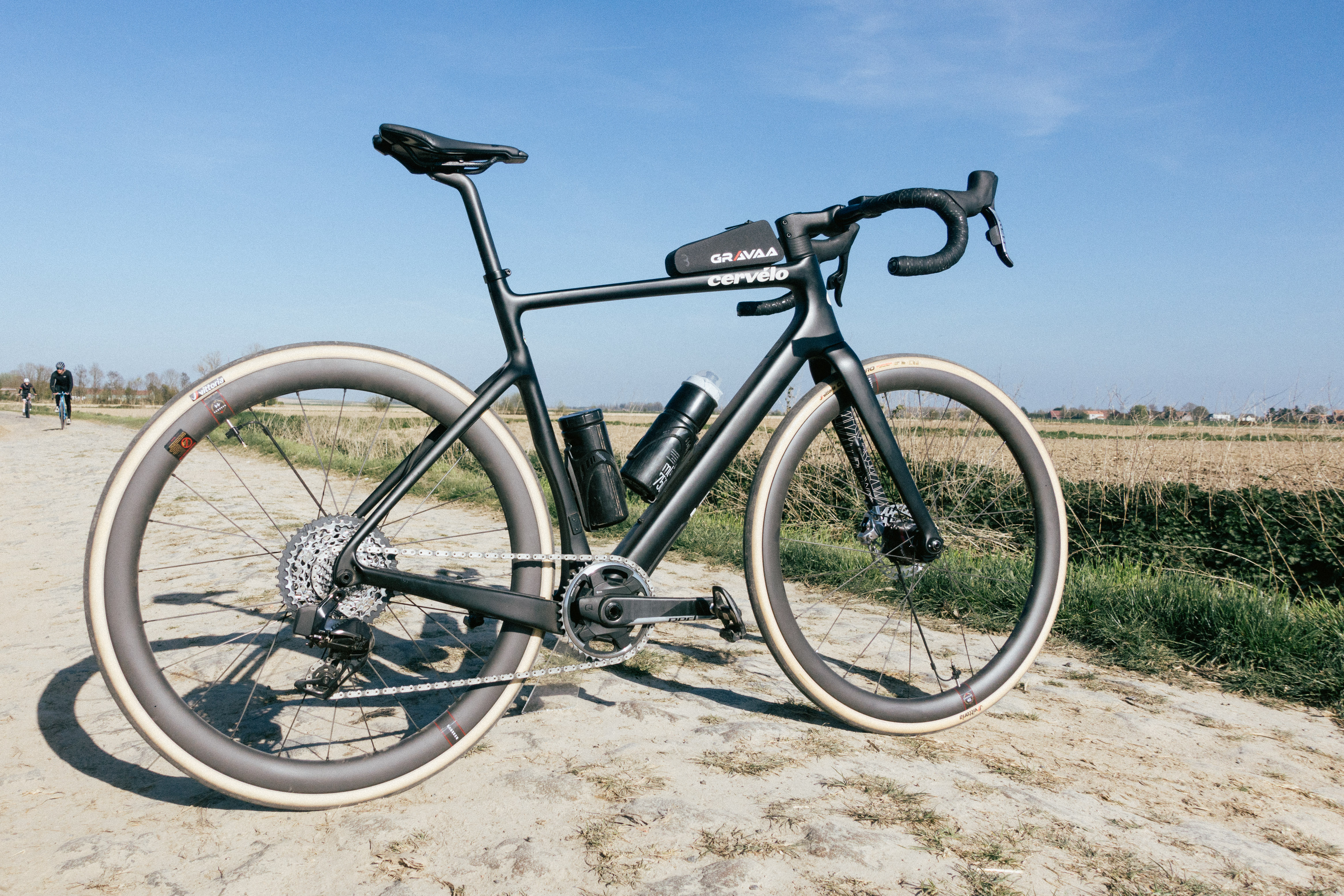
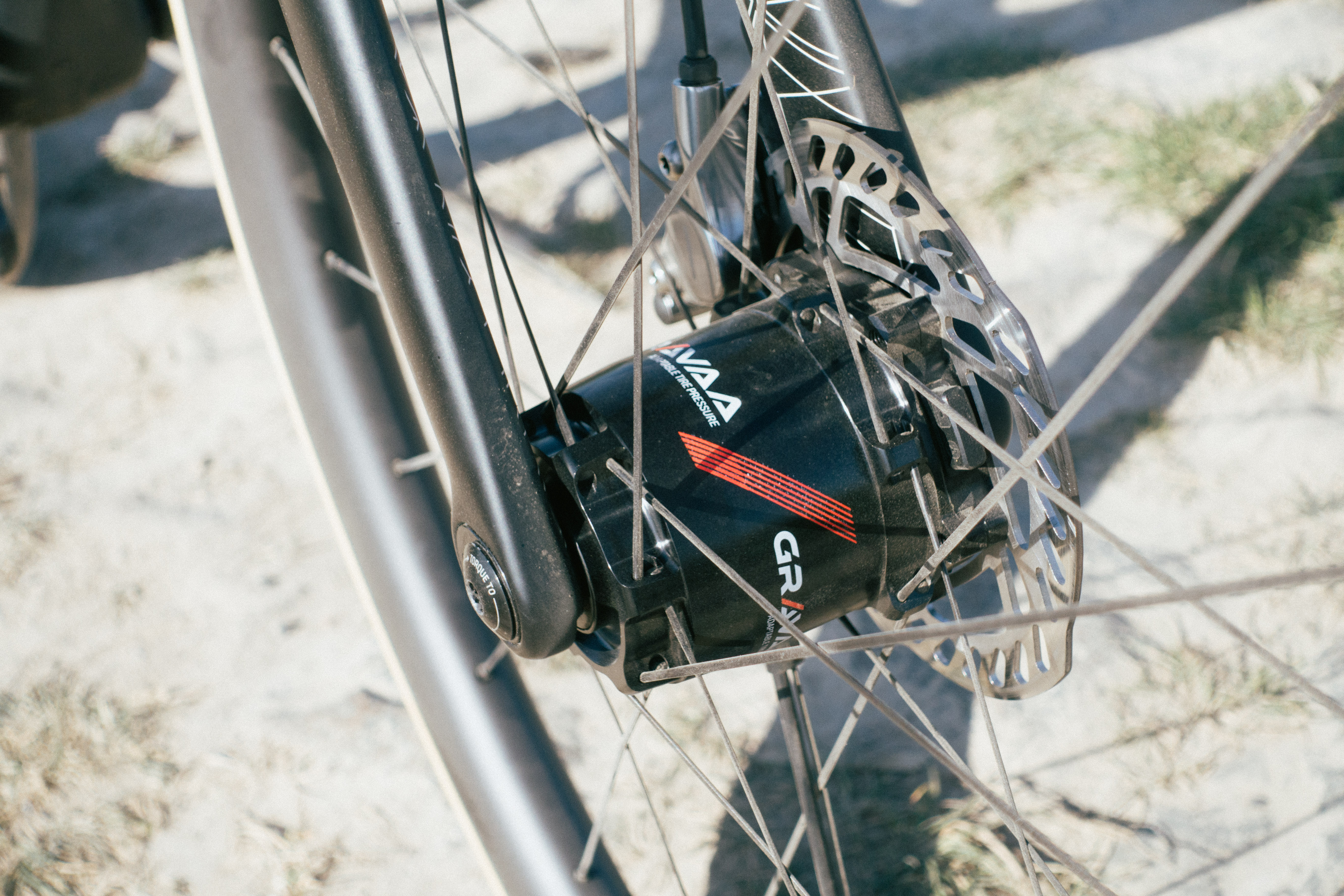


Everything you need to know about the Gravaa adjustable tyre pressure system
Let’s start with the technical details before we dive into the ride experience, as you do kind of need the grounding before we jump into the sensations. What we’re working with here is a pair of hubs that work together as a system, much like a set of Shimano Di2 front and rear derailleurs. The front is the master, while the rear is the slave. A bar-end transponder communicates things by Bluetooth or ANT+.
The system is controlled by a pair of wireless buttons, very much akin to SRAM wireless blips. You can put them anywhere, and we saw Vos putting them on the tops, as she already ran sprint shifters. One button to inflate, one to deflate. As I said, it’s a system, so you don’t control each tyre individually, but you can program in on the Gravaa app an offset in terms of pressure, meaning you don’t have to have identical pressure front and rear.
The system is infinite. Pressing the ‘inflate’ button engages a crankshaft in the hub which compresses air and forces it into the tyres. It costs you about 4 watts per wheel and takes 800m to 1km to gain 1 bar of pressure (you have to use bar in the app, though your readouts can be in PSI on your head unit). The higher the pressure you need the longer it’s going to take to reach it.
Pairing it is pretty simple. Spin each wheel and it wakes the system up. On a Wahoo, like my Bolt V2, you just add it as you would any other sensor, but for Garmin users, you’ll need to add a widget from the ConnectIQ app store, though this does net you some better visuals like it’ll tell you what pressure it’s trying to reach, colour coding, that sort of thing.
Deflation is far more rapid. Press a button, the valve opens, and a sound like a flat ensues before being rapidly cut off. You can either set the system up to go up or down in increments of 0.1 bar (and risk bottoming out or exploding your tyres) or you can program in a series of presets. I had my system set up with three, a high (my usual road pressure), a medium (for less horrible cobbles) and a low setting for the really rough stuff.
Gravaa claims there’s a 25-30 watt saving on the cobbles by getting the pressure right, with a cost of about 250g per wheel. Having done our own lab testing with road tyres up to 40mm I can see the wattage claims have the ring of truth about them.
What’s the Gravaa system like to ride?
If I had to sum it up in one word I’d probably have to go with ‘subtle’. I did three laps of a 5km circuit, half of which was on the road, and half of which was on Champin-en-Pévèle. For the visually minded, I made a reel for Instagram which gives you a neat demonstration at the end of how the deflation works.
I kicked off at the lowest setting, then spent the first road section trying to pump my tyres up. Maybe it was a case of mismanaged expectations, but I initially thought it wasn’t working. The problem is that you press the button and nothing happens, besides a very small extra noise that you can’t hear in the wind. It is doing something though, but you have to trust your head unit for this.
Having spent 2km or so getting my tyres up to 60psi, I then arrived at the start of the sector and dropped them down to the middle, and then the low setting. I was on 30c tyres, rather than 32c as I expect the Visma riders will use, but even so there was definitely some tangible benefit. At 60psi the cobbles are horrible, but at just over 30 they’re somewhat bearable, though the risk of a pinch flat does naturally increase. It was both smoother and easier, and once I was on my third lap and knew how long the thing takes to pump up it was easy to see how you could game the system a little, with a little help with some pace notes from a DS. “Sector 9 coming up, preset 3 everyone”, or “You’ve done the hard yards now, Wout, so sit in the wheels and get your tyres up again before the final”.
Ultimately it’s pretty seamless. You press a button, tyres go up, you press another button, tyres go down. For such a tech-focussed team as Visma-Lease A Bike I can see why it’s something they’d want to incorporate into their plans, so why does it leave me scratching my head a bit?
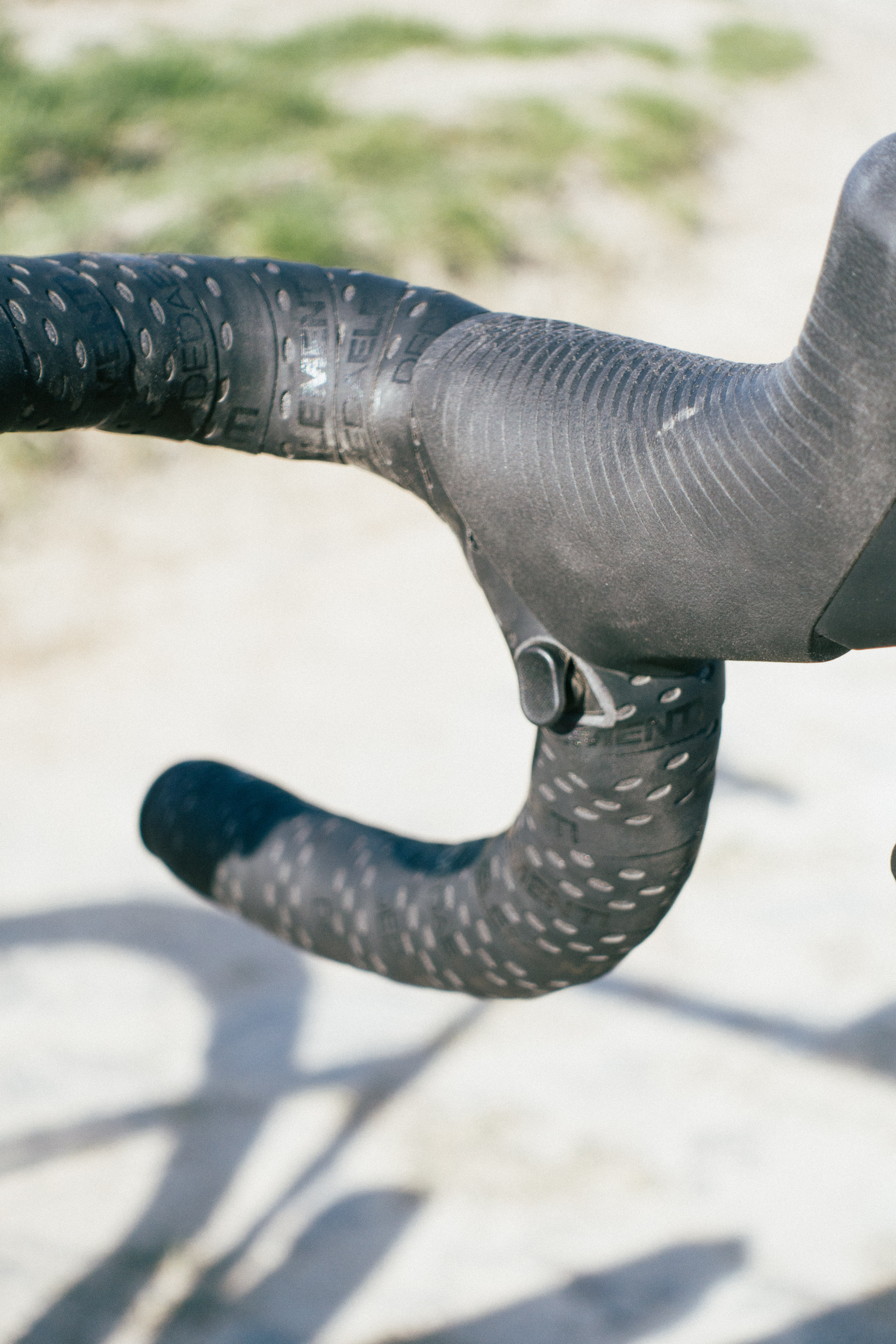
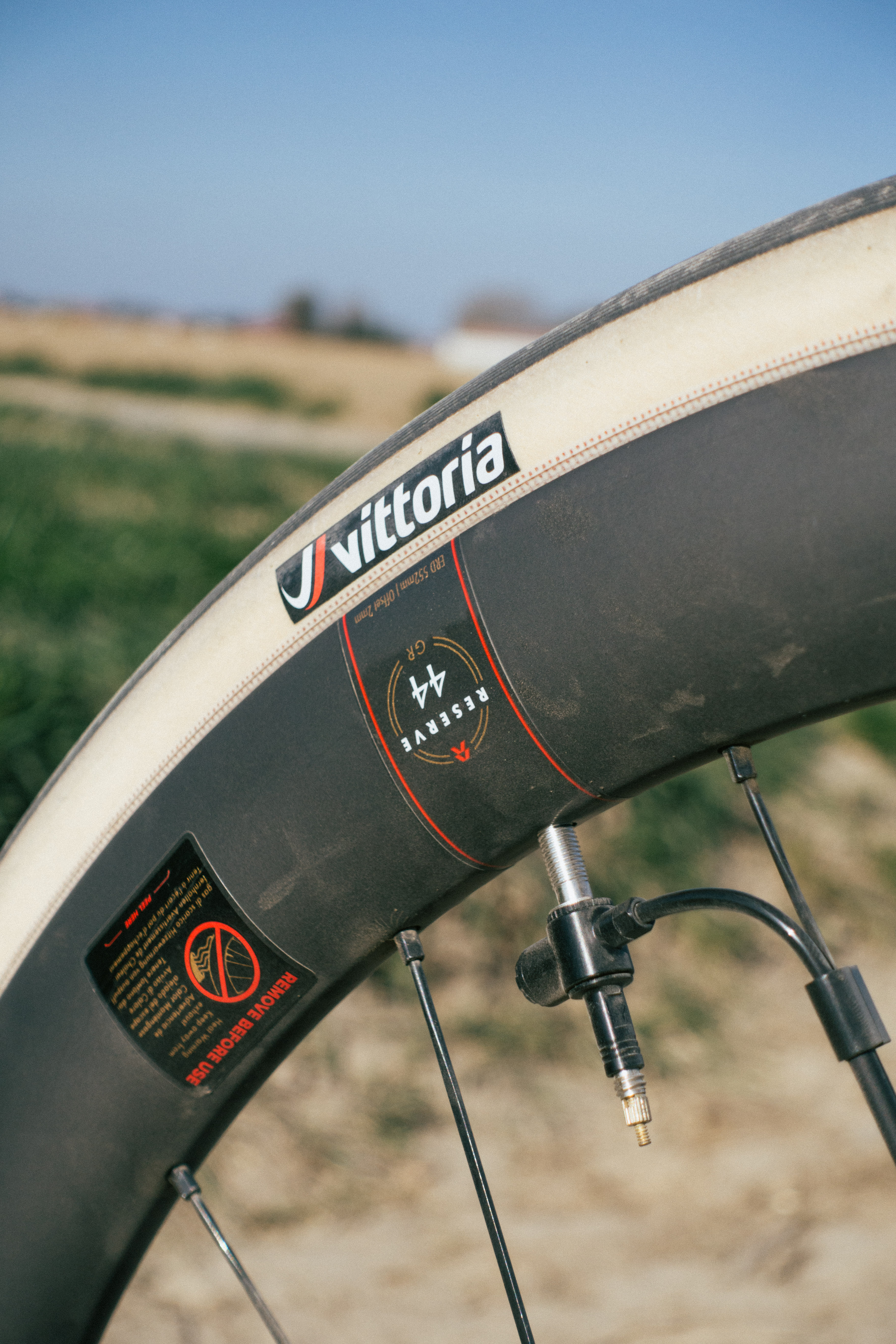
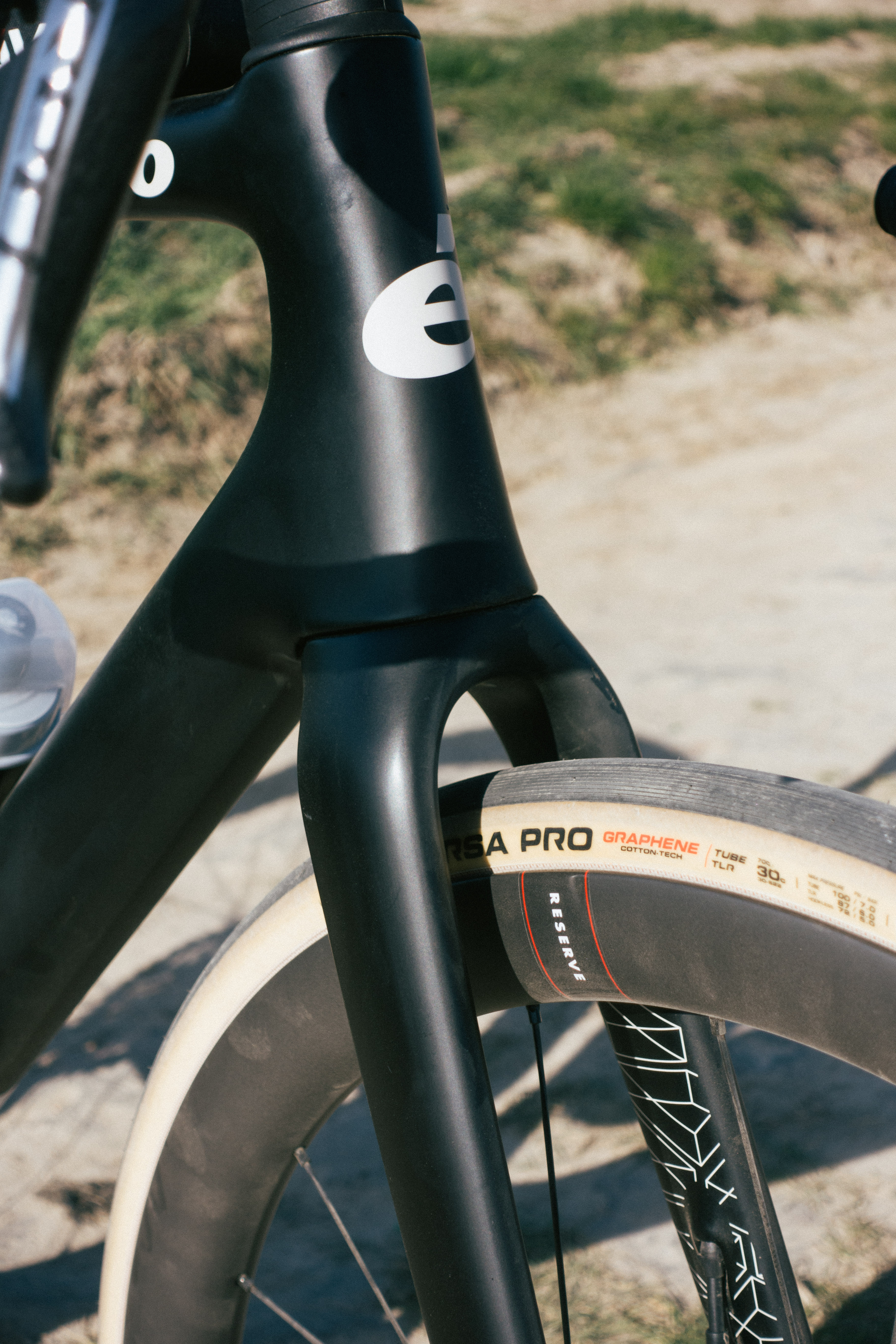
How the Gravaa system will help in races
My time with the system was limited, as it was for other media outlets that have had a play on it in recent days, so I’m not going to profess that I’ve got in-depth knowledge of it. I have enough to form an initial opinion, though.
From a race perspective, I can see that this system allows Visma to keep what they see as their optimal aerodynamic setup, whilst also maximising wattage gains over the cobbles. We’ve seen Wout van Aert using the system on his Cervélo S5, the brand's all-out aero bike, meaning he’s keen to maintain as much of an aero advantage as possible.
With the help of a DS he could simply be told when to pump and release his tyres, or have it on his notes on his stem alongside when to eat, when to drink, when to remember to breathe etc.
With some nifty custom GPS alerts on the team’s Garmin bike computers there is even the potential for automated alerts to remind riders to pump/release air, and you could even gamify the pumping up of tyres too, choosing to inflate on descents (such as there are any at Roubaix), when in the wheels, or when you’ve got a tailwind so as to minimise the impact.
Where I think it might have the most benefit is in puncture prevention, or at least damage limitation. The system will detect if the tyre pressure drops below a certain threshold, and as long as you’re going more than 15kmh it’ll continue to pump the tyres up automatically until the target threshold is reached. In the event of a slow flat from a pinched tyre it could well allow Visma riders to at least ride on until such time as they can be serviced by their team car, rather than being stranded mid-sector with a fully flat tyre.
Wheel swaps are possible with the system, though a front swap would lose the master hub, rendering the system impotent, and a rear wheel swap is usually too time-consuming, so in reality, I expect in the event of a flat the Visma riders will swap to a non-Gravaa bike, or they’d have to repair the spare bike with their head unit which isn’t feasible in a race.
While it’s technically a very good system, works as advertised, and in my short time on the cobbles I’ve actually got no doubts that the gains on offer are real, I do worry that it’s an answer to a problem that has a far more simple solution: Fit wider tyres.
Is the Gravaa system overcomplicating things?
Paris-Roubaix is chaos. There are crashes, the team cars can’t reach riders for long stretches, and while you could plan your pressure strategy until the cows come home it’s yet another thing for the riders to think about.
Taking Wout van Aert in recon as an example, we saw that he flatted and very nearly lost control of his machine in the Arenberg Forest. The team last year were using 32c tyres and I’ve no reason to suspect they’ll use anything larger this year at this point. Why not instead just maximise the tyre clearance of the S5 (or the Soloist, as some riders were also seen using) and fit a 34c tyre?
The team will almost certainly run a 1x system so there’s no front derailleur to get in the way, they’ll have more grip, they’ll be less fatigued, they will have a reduced risk of pinch flats, and by our estimations on rough surfaces the wider you go the faster you go.
There’s a slight aerodynamic deficit, but we’ve shown that that is more than alleviated by the rolling resistance gains. If you dive into the data in our lab tests you’ll see there’s a bit of a strange anomaly whereby a 35c Pirelli is actually marginally slower than a 32c, but the trend across all of our tests is that wider=faster.
Moreover, we’ve also tested tyres over a huge array of pressures, showing that on smooth tarmac, as long as you’re in the right ballpark, there’s basically no difference in rolling resistance between a ‘road’ pressure and a lower pressure for the cobbles.
Sadly I fear the team is butting up against the limits of pro-tier tyres. The team are Vittoria sponsored, and the Corsa Pro only goes up to a 32c at present. We saw last year that Dylan van Baarle used a 32c Corsa Pro Control on the rear, presumably due to the increased durability, so the team clearly aren’t against using that tyre. Oddly, our testing showed that the second-tier Corsa N.EXT was faster than the Pro Control too, which really would upset the sponsors.
Now I’m not going to sit here and tell you I know better than the scientists at Visma. I am certain that their testing has concluded that the way they’re doing it is the best, but I’d be really curious to see if there’s much in it between a self-inflating 32c Corsa Pro, and a larger, lower pressure 34c Corsa N.EXT on the cobbles. Once you factor in the added resistance to flatting, improved grip, and lower fatigue I think I’d probably just choose the wider tyres if I wanted to do the Roubaix sportive as fast as possible.
Or (rogue I know) use both systems, but maybe that’s simply too much additional mass for a pro to comprehend.







